Maybe it was my Asian upbringing that taught me never to waste food, as my family used and ate every part of the vegetable, fish, chicken, pig, or cow that we brought home.
Or maybe it’s my ever-growing curiosity when it comes to food from the land… but when I walk around the garden, looking at all my thriving plants, I always think, Can I eat that?
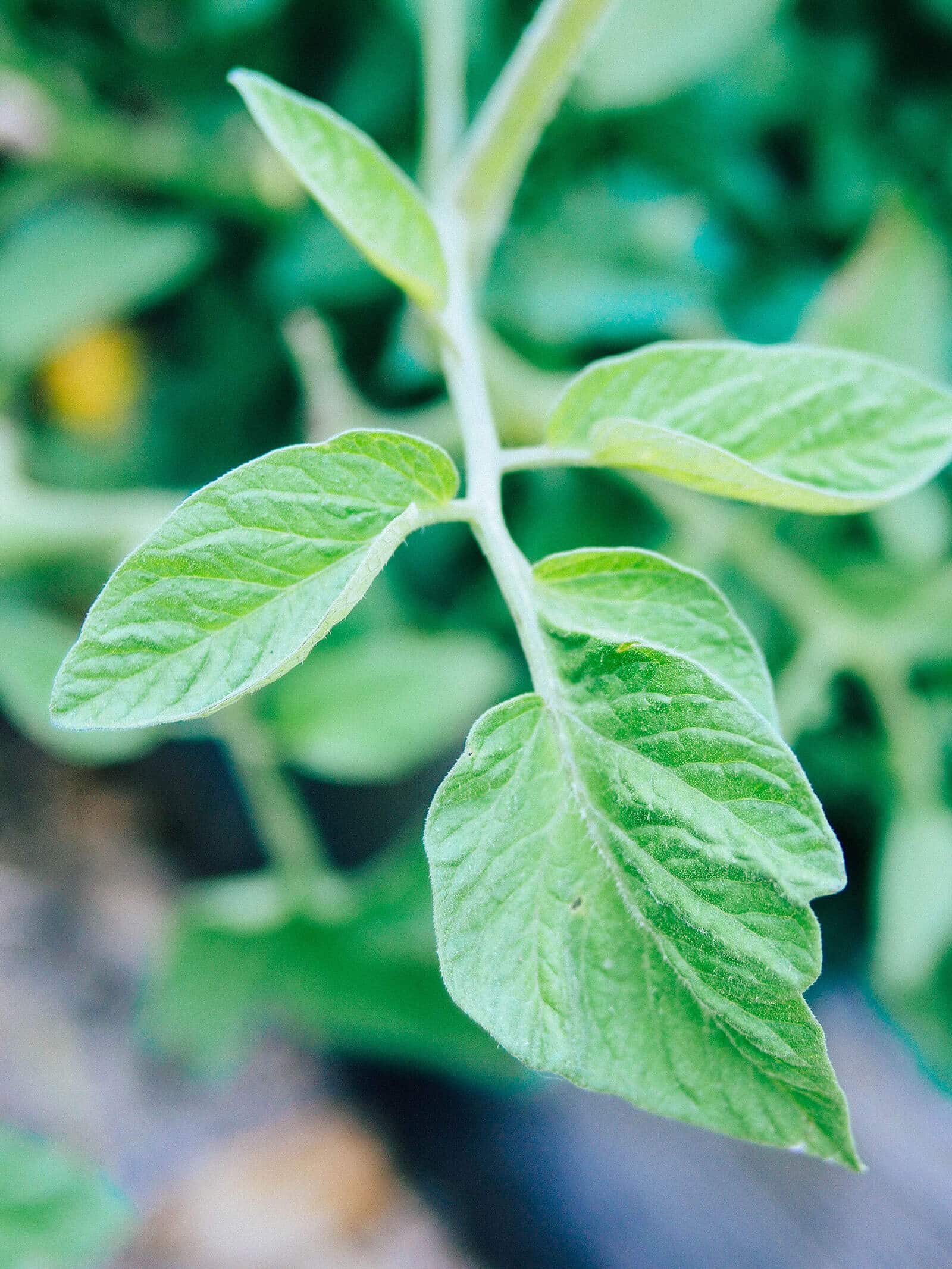
And by “that,” I mean the unconventional parts of the plant that you typically don’t think to eat. This was how I came to love artichoke stems, leek greens, and cucumber leaves, parts that are normally discarded or composted, but are in fact quite tasty.
Worth a read: These are all the edible parts of the vegetable crops you’re growing
So one day, when I was walking by my tomato plants, I started wondering whether the leaves were edible or not.
With vines that sometimes grow to 10 feet long, it seemed like such a waste that the leaves weren’t used when the amount of fruit seemed so small in proportion.
It got me thinking… Why don’t we eat tomato leaves?
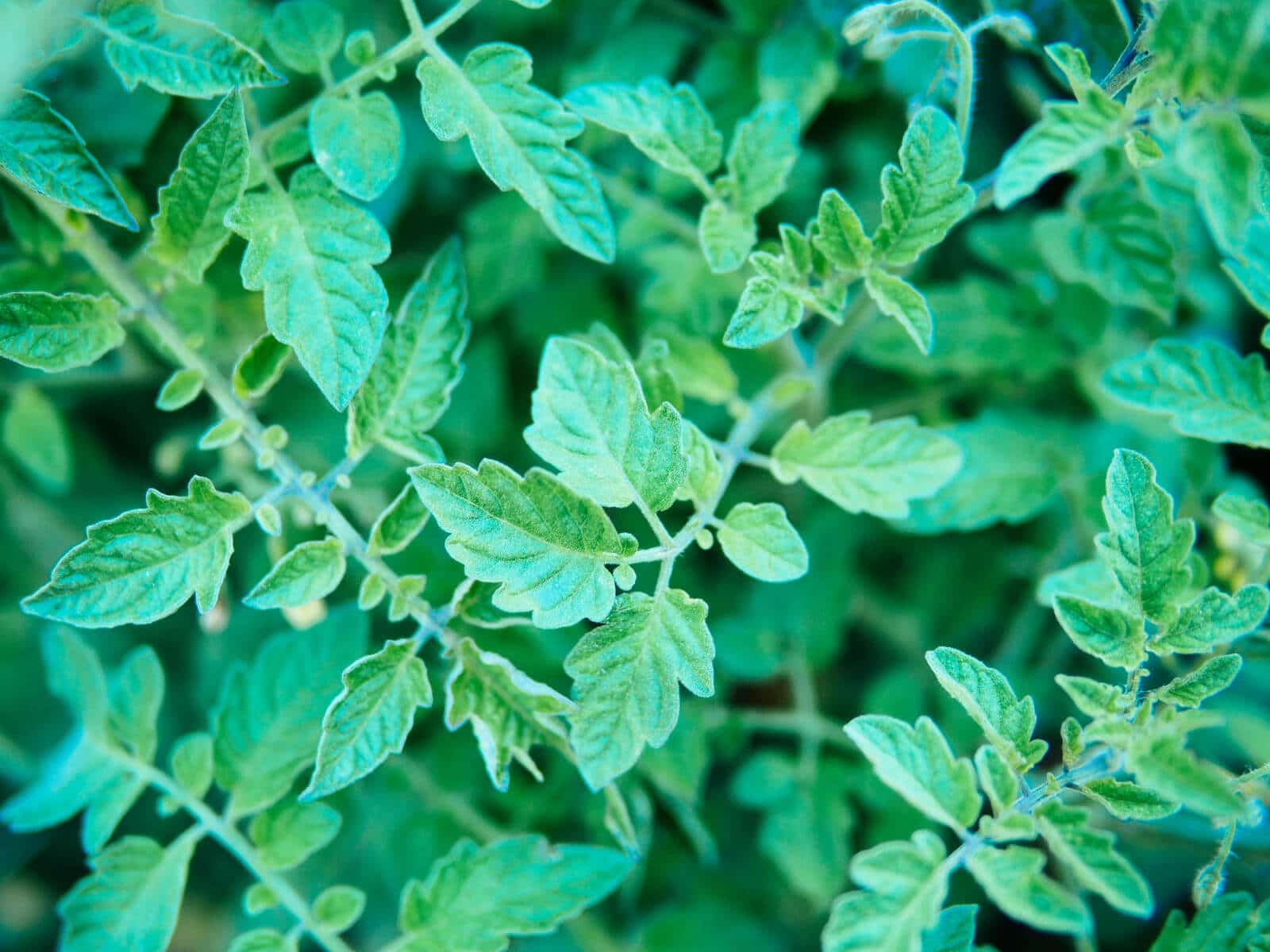
Popular culture has taught us that tomato leaves are part of the “deadly nightshade” family and thus, they must be poisonous. But I bet that more than a few people, if asked, would have no idea what that even means. It’s just what’s known. No questions asked—but we need to ask.
What is a nightshade, why are the leaves poisonous but not the fruit, and why don’t we see bunches of leaves in the supermarket if they aren’t poisonous?
Let’s take a look at all the myths surrounding the Solanaceae family and explore the science that says otherwise.
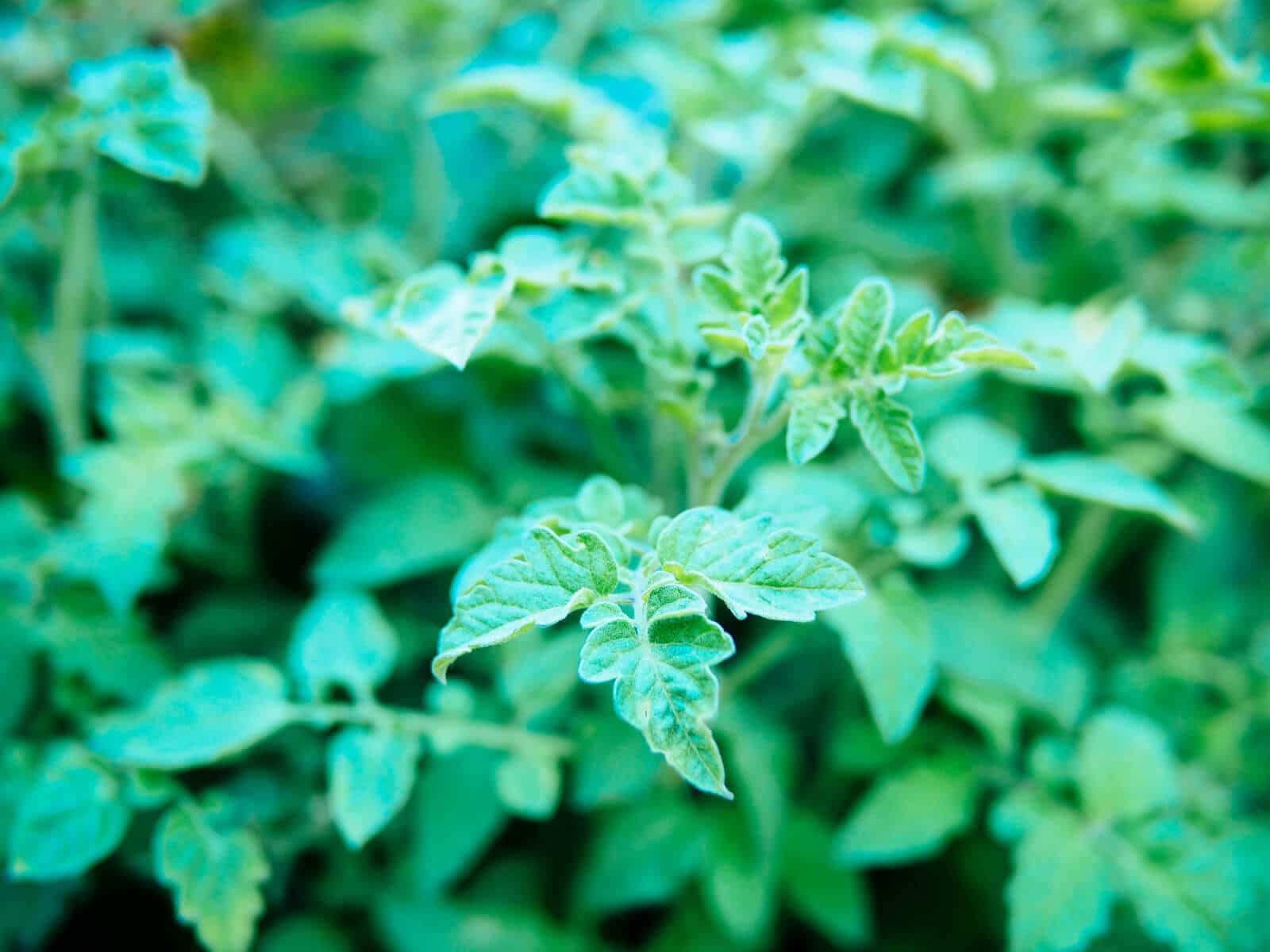
Myth #1: Nightshades are highly poisonous, so tomato leaves must be poisonous too.
When referring to the Solanaceae family of plants, many people call it by its more common moniker, the nightshade family.
Within this family are the vegetables we know and love, like tomatoes, tomatillos, potatoes, eggplants, and sweet and hot peppers.
But also within this family are the nightshades famously known to be toxic to humans, like black henbane, mandrake, and the “deadly nightshade,” also known as belladonna (Atropa belladonna).
Despite its nickname, belladonna, an herbaceous perennial, has historical use in herbal medicine as a pain reliever and muscle relaxer, a treatment for stomach and intestinal issues, and even as a beauty aid.
In fact, the name “bella donna” means beautiful lady in Italian. It comes from the outdated practice of women putting drops of belladonna berry juice in their eyes to dilate their pupils. The look was considered attractive in the day!
But rest assured that though tomatoes are distantly related to belladonna, they do not contain the chemical compounds that make belladonna (especially its berries) so poisonous.
The domestic tomato (Solanum lycopersicum) does have an interesting history however, as its scientific name, lycopersicum, is Latin for “wolf peach” and derives from German folklore.
When the tomato was brought to Europe in the 16th century, people believed it to be poisonous like other members of the Solanaceae family. Legend had it that witches used these hallucinogenic plants in potions to conjure werewolves. Since the tomato plant’s fruit looked so similar to that of belladonna, it was dubbed the wolf peach.
You see, tomatoes of yore looked nothing like the plump, juicy, fashionable tomatoes we know and love. Before modern cultivation, tomatoes grew wild in the Andes and they were tiny—the size of a blueberry. Their shape and color were often mistaken for belladonna berries.
These days, we know that while tomatoes belong to the (very large and diverse) nightshade family, they definitely aren’t of the deadly nightshade variety.
This ambivalence was later reflected in the tomato’s other accepted scientific name, Lycopersicon esculentum (translated to “edible wolf peach”).
As you can see, the bad rap bestowed on tomatoes is simply an old wives’ tale, left over from a less-informed era.
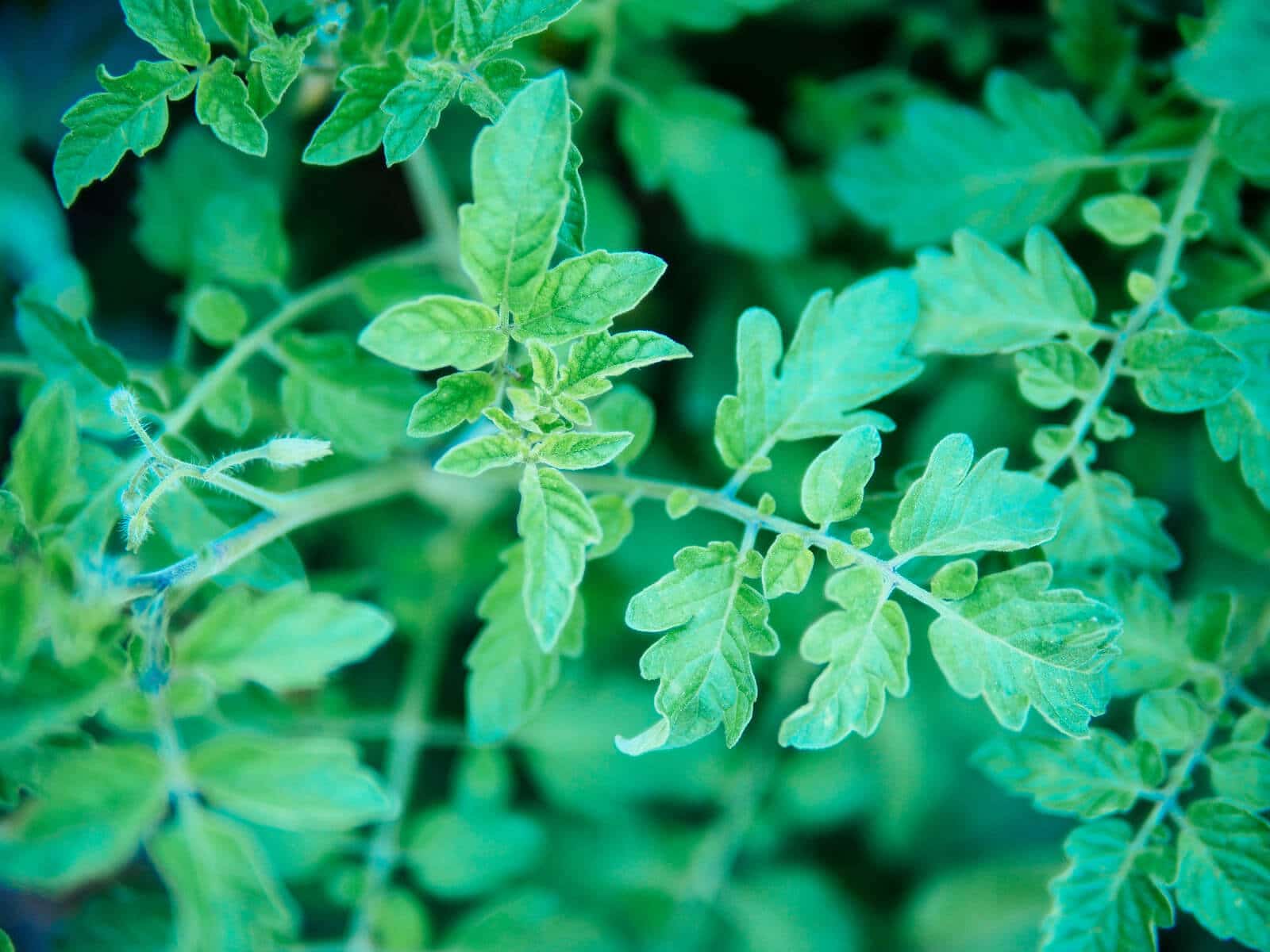
Myth #2: Tomato leaves contain toxic compounds called alkaloids.
As mentioned in my previous post on edible (and highly misunderstood) carrot tops, all vegetables contain alkaloids. Alkaloids are part of a plant’s defense mechanisms (existing in all parts of the plant to protect against certain animals, insects, fungi, viruses, and bacteria) and we consume them on a daily basis in various amounts.
That locally-grown heirloom bean and kale salad you had for lunch? Alkaloids. Those antioxidant-rich organic green smoothies you make every week? Major alkaloids.
While it’s true that some alkaloids are not good for you (like nicotine and cocaine), others can be good or bad, depending on your view (like theobromine, the stimulant found in chocolate, or caffeine, that Monday-morning life-giver).
Even though alkaloids are present in your everyday veggies, you could never eat enough of them in one sitting for the alkaloids to be harmful.
So what gives with tomatoes?
The major glycoalkaloid in the tomato plant is tomatine. (To put it simply, a glycoalkaloid is an alkaloid bonded with a sugar.) Tomatine exists in all green parts of the plant, including the stems, leaves, and green tomatoes.
(For the sake of clarity, whenever I mention “green tomatoes” in this post, I’m referring to the immature, unripened green tomatoes—and not the varieties of naturally green tomatoes.)
A study published in the Journal of Agricultural and Food Chemistry found that the highest concentrations of tomatine were found in senescent leaves, followed by the stems, fresh leaves, calyxes, green fruits, and finally, the roots (which had the lowest concentrations).
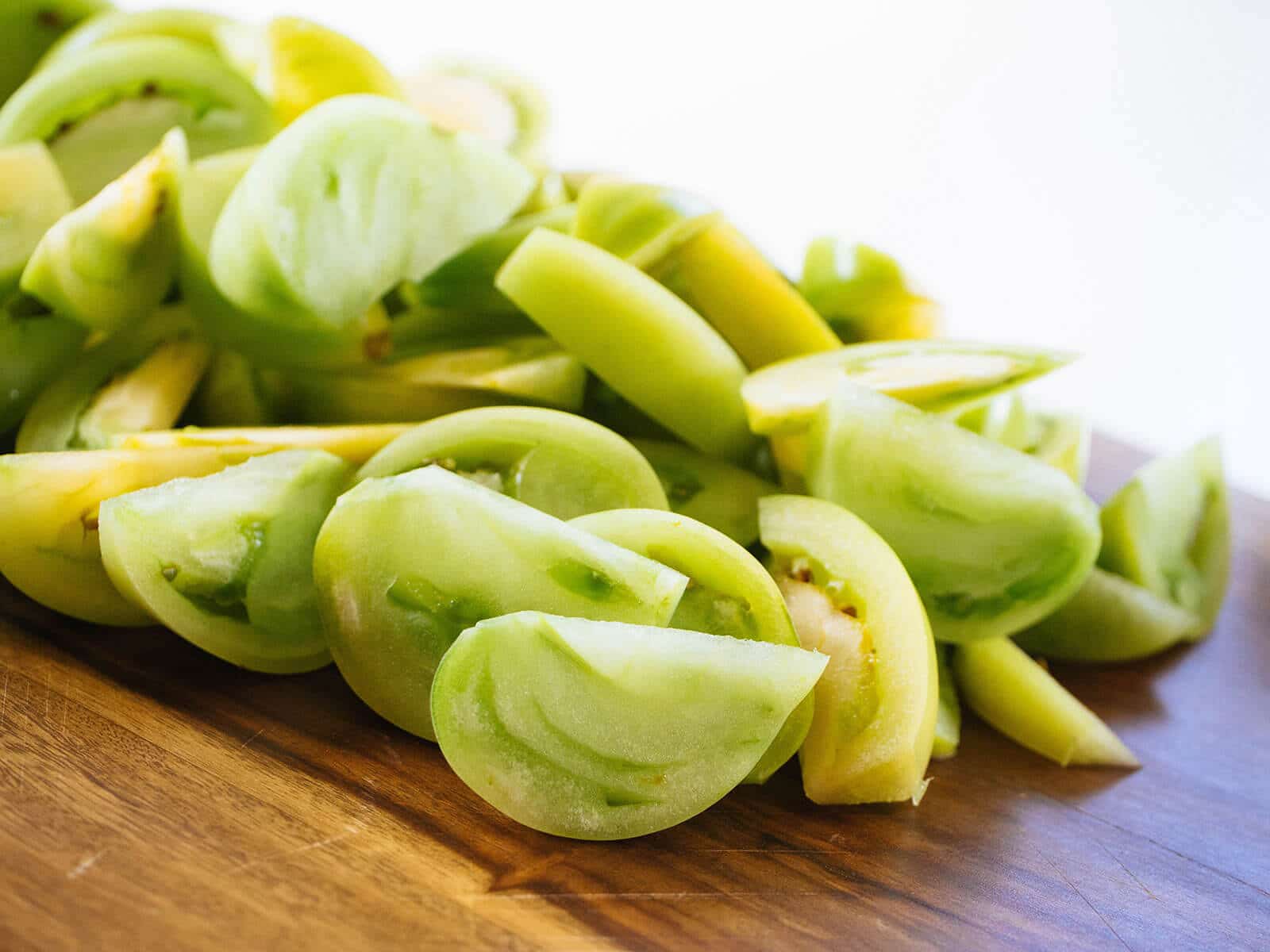
The difference in concentration between the fresh leaves and green fruits is negligible, so one isn’t necessarily “safer” to consume than the other. While tomatoes do show a decline in tomatine content as they mature and ripen, no one has ever thought twice about devouring a heaping of fried green tomatoes or homemade pickled green tomatoes!
Recipe to try: The best roasted green tomato salsa verde
Glycoalkaloids are also poorly absorbed by the gastrointestinal tract of mammals, and will pass through quickly to the urine or feces. In people who are sensitive to these compounds, stomach irritation may occur but they would have to ingest an unrealistic amount of green tomatoes or tomato leaves to experience ill effects.
So what’s the deal? Are tomato leaves poisonous or not?
Disclosure: If you shop from my article or make a purchase through one of my links, I may receive commissions on some of the products I recommend.
In the book Toxic Plants of North America, the authors wrote that a toxic dose of tomatine for humans would appear to require at least a pound of tomato leaves, and that “the hazard in most situations is low.”
According to this food safety study (which compared the potential toxicity of glycoalkaloids found in tomatoes, potatoes, and eggplants), tomatine is a relatively benign glycoalkaloid. It resulted in no significant changes to liver weight or body weight when fed to mice, and is not considered adverse to human health.
Another study has shown tomato leaves and tomato stems to have higher antioxidant activity and polyphenols (plant-based micronutrients that help fight disease and improve overall health) than tomato fruits. The following, a different study compared antioxidant levels in tomato byproducts and found that tomato leaves contain more powerful antioxidants than the stems.
What’s most surprising is the discovery of tomatine as a cancer inhibitor. The glycoalkaloid has been found to effectively kill or suppress the growth of human breast, colon, liver, and stomach cancer cells.
This study suggests that consumers could benefit from eating high-tomatine green tomatoes, and that there may be a “need” to develop high-tomatine red tomatoes as well (for the treatment of cancer and/or the study of tomatine as an anti-carcinogenic and anti-viral agent).
Judging from these studies, and the lack of evidence that tomato leaves are toxic for human consumption, I’ll have to give Myth #2 a miss.
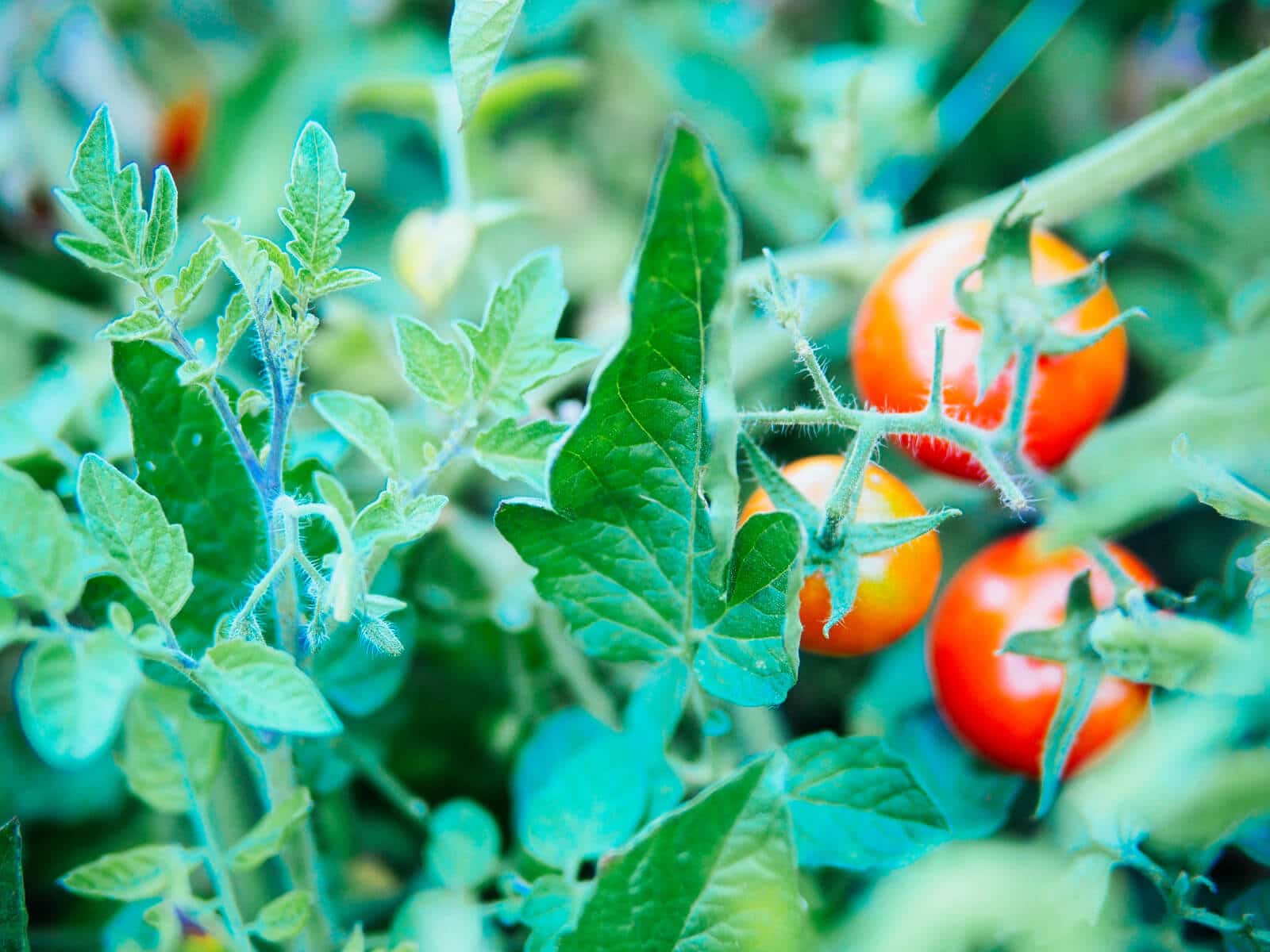
Myth #3: Dogs have died eating tomato leaves, so they’re definitely poisonous.
Somewhere along the way, you may have heard a story of someone’s dog dying because it ate a bunch of green tomatoes or tomato leaves. But is this cause for concern for you?
Here’s the deal: tomatine can be deadly for a dog if eaten in large quantities.
And the last part of that sentence is key—in large quantities.
Whether or not tomato leaves can kill a dog is very much a dose-dependent issue. As most pet owners know, dogs eat all kinds of crazy things and don’t really know when to stop. If they have unrestricted access to your garden and haven’t been trained to stay away from plants, it’s very possible they’ll chow down all your tomatoes, leaves and all.
For small dogs, especially, this amount of ingestion can cause diarrhea and vomiting at best, or a hospital visit in the worst-case scenario. This goes for many other plants in your house and garden, not just tomato plants.
Related: These are the safest houseplants to keep around dogs and cats
The list of edible plants that are toxic to dogs is long and surprising: lemongrass, chamomile, tarragon, borage, milkweed, purslane, and various parts of apples, peaches, and grapefruits.
Does toxicity to a dog equal toxicity to humans? Far from it.
There are other foods we eat freely that are known to be poisonous to dogs, such as chocolate, grapes, raisins, garlic, and onions. But the substances that are harmful to dogs don’t do the same damage to humans.
To date, there’s scant evidence in veterinary literature regarding the toxicity of tomato leaves. One study in Israel examined the possibility of livestock poisoning by feeding tomato vines to cattle for 42 days, but found no ill effects.
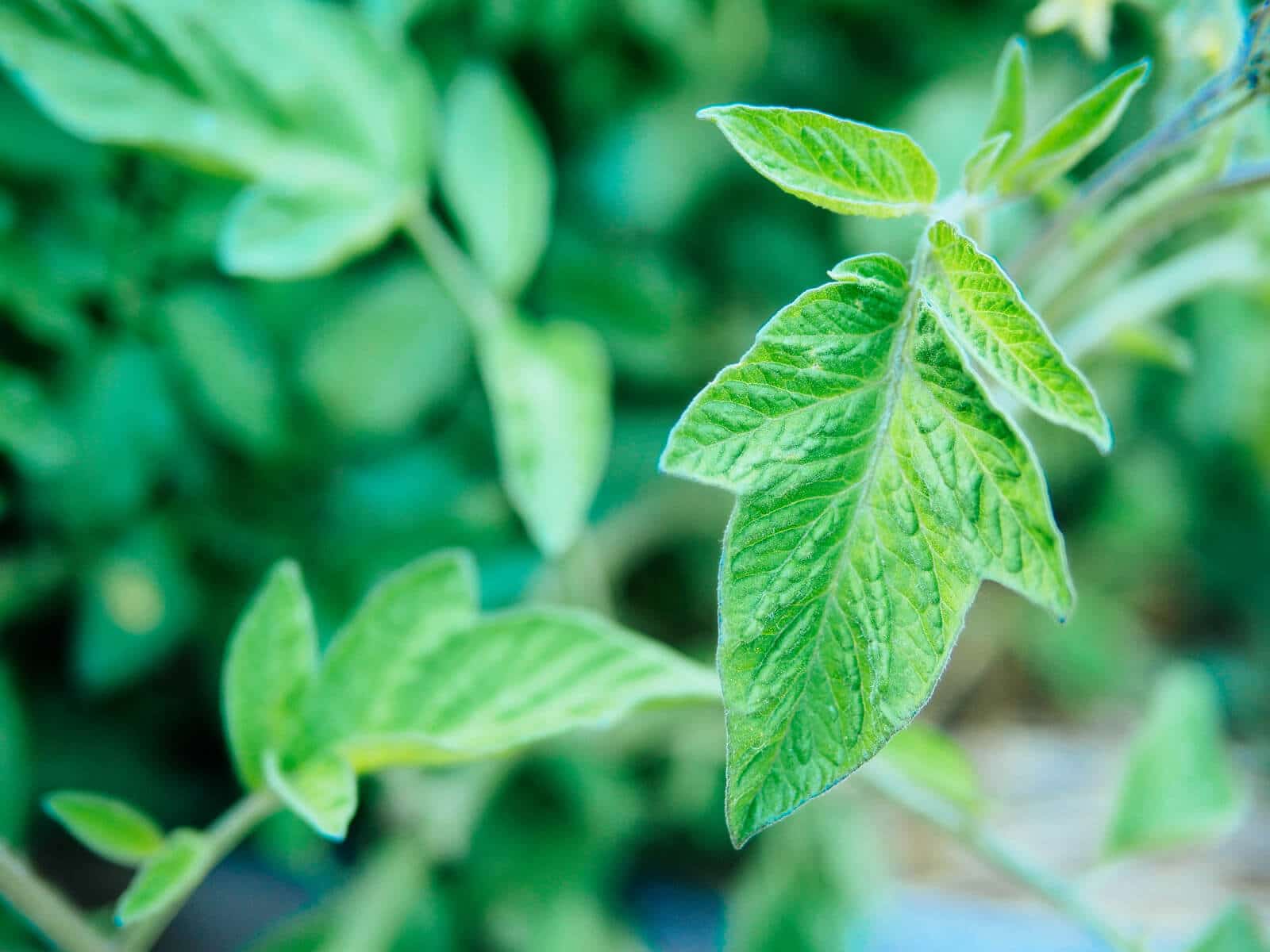
Myth #4: Organic gardeners make tomato-leaf sprays to kill pests, so that must mean tomato leaves can kill us too.
Tomato-leaf sprays are made by chopping and soaking tomato leaves in water, then using the sprays on various plants to control aphids.
Since tomatine, a glycoalkaloid, has fungicidal properties and is part of the tomato’s natural defenses, it makes sense that the compound could potentially protect against pests when extracted into a solution.
But theoretically, you could make a spray with any green part of the plant, like the stem (which contains even higher amounts of tomatine).
Unless you’re allergic to tomatoes, the tomatine in tomato-leaf sprays won’t harm you—and that’s why it’s used as an organic method of pest control.
Read more: Make your own non-toxic insecticidal soap
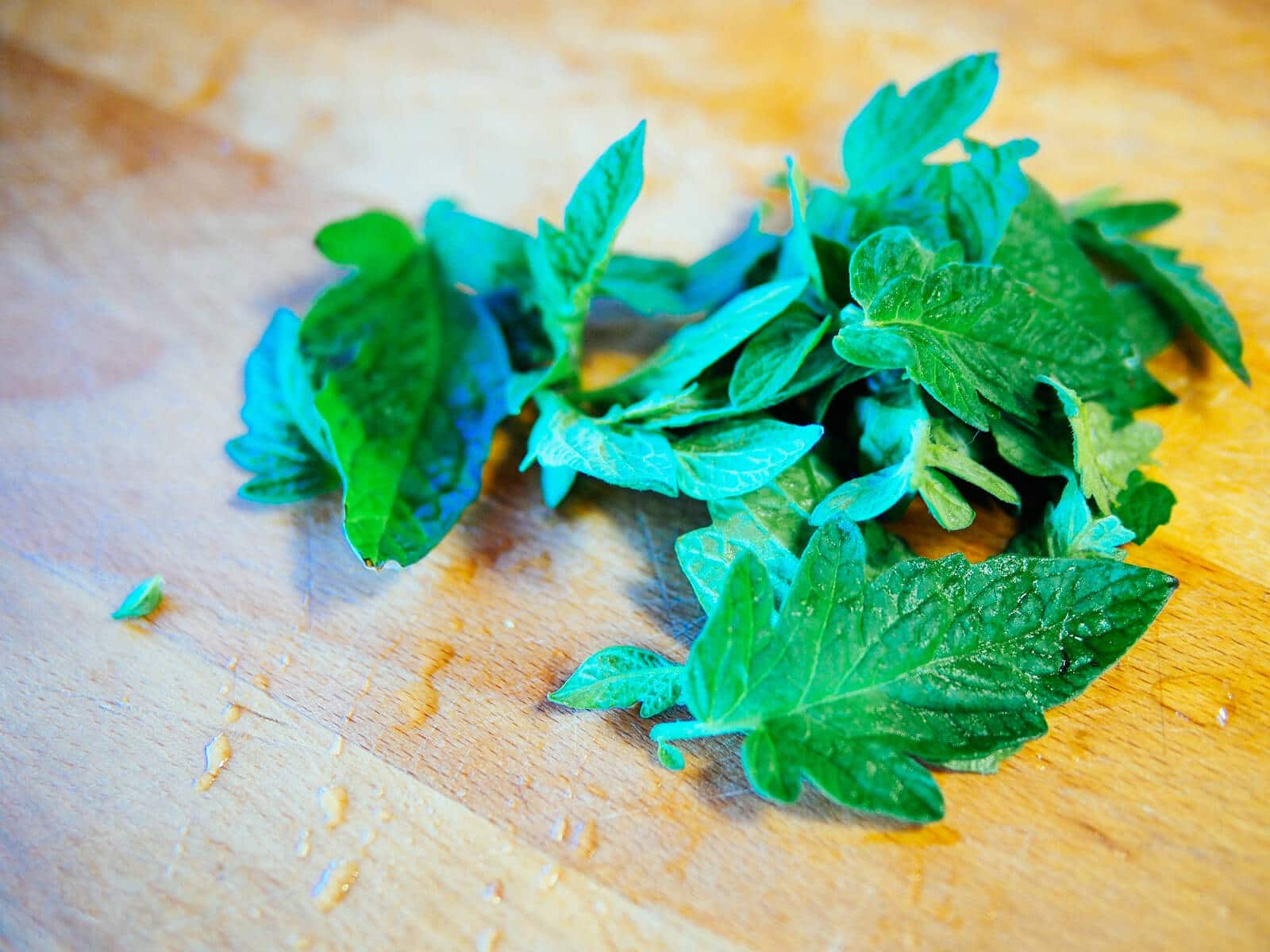
Myth #5: Tomato leaves aren’t sold commercially and no one has ever cooked with them, so that’s a sign they’re not meant to be eaten.
True, if you tried to search for recipes for tomato leaves, you aren’t likely to find any. In his book Cooking by Hand, former Chez Panisse chef Paul Bertolli included a recipe for leafy tomato sauce.
In The No-Waste Vegetable Cookbook, I have my own version of a spicy minty tomato sauce infused with tomato leaves, as well as tomato leaf pesto that’s delicious on pizza and sandwiches. Aside from those examples, however, not many people have stepped up and ‘fessed up to their culinary use.
But—and a big but—that does not mean they aren’t edible.
Until I started traveling to other countries, exploring their local cuisines, and cooking from my garden, I never knew all the possibilities of the plants I was growing. If you live anywhere outside of North America, you’re probably shaking your head at what we throw out!
Americans tend to favor sweetness, and many of the things eaten abroad are acquired tastes over here (such as bittermelon and burdock root). I imagine that tomato leaves—with their strong, earthy smell and flavor—are low on the list of desirable greens.
But tomato leaves are ripe (no pun intended) for experimentation in the kitchen. I’ve found them best used as an infusion so you can really capture the essence of a warm summer tomato without overpowering the main dish. Try infusing a handful of tomato leaves in olive oil (I love it as a drizzle on a Caprese salad) or infusing the leaves in tomato juice when you make gazpacho.
Another favorite technique is tossing thinly sliced tomato leaves with a bit of fish sauce, and using it as a savory garnish for rice or fish. Gently fried whole leaves of tomato also make a tasty topping for pasta, the way you’d fry sage leaves in browned butter. Dehydrated and crushed tomato leaves can be used as seasoning, perhaps folded into pizza dough or sprinkled over noodles.
Waste less food.
Get more nutrition.
All with the same vegetables you already know and love! The No-Waste Vegetable Cookbook is your guide to everything edible from all the plants you grow or buy—things you might not have known you could eat.
As for the rest of my garden, an adventurous appetite has led me to discover how delicious broccoli leaves are (you won’t find many recipes for those either), as well as cook with edible carrot tops, green nasturtium seed pods, crunchy radish seed pods, flavorful radish greens, and sweet, tender pea shoots (which are actually an Asian grocery staple).
Learning how to use the entire plant is my favorite “lazy gardening” strategy because it means I can get more food out of my garden with a lot less work.
The fact that tomato leaves aren’t part of the mainstream American diet doesn’t make them toxic by any means. People just don’t know what to do with them… yet. (Hopefully this will change in my generation.)
You know what is toxic though? The amount of food we waste in this country, and how Americans lead the world in food waste.
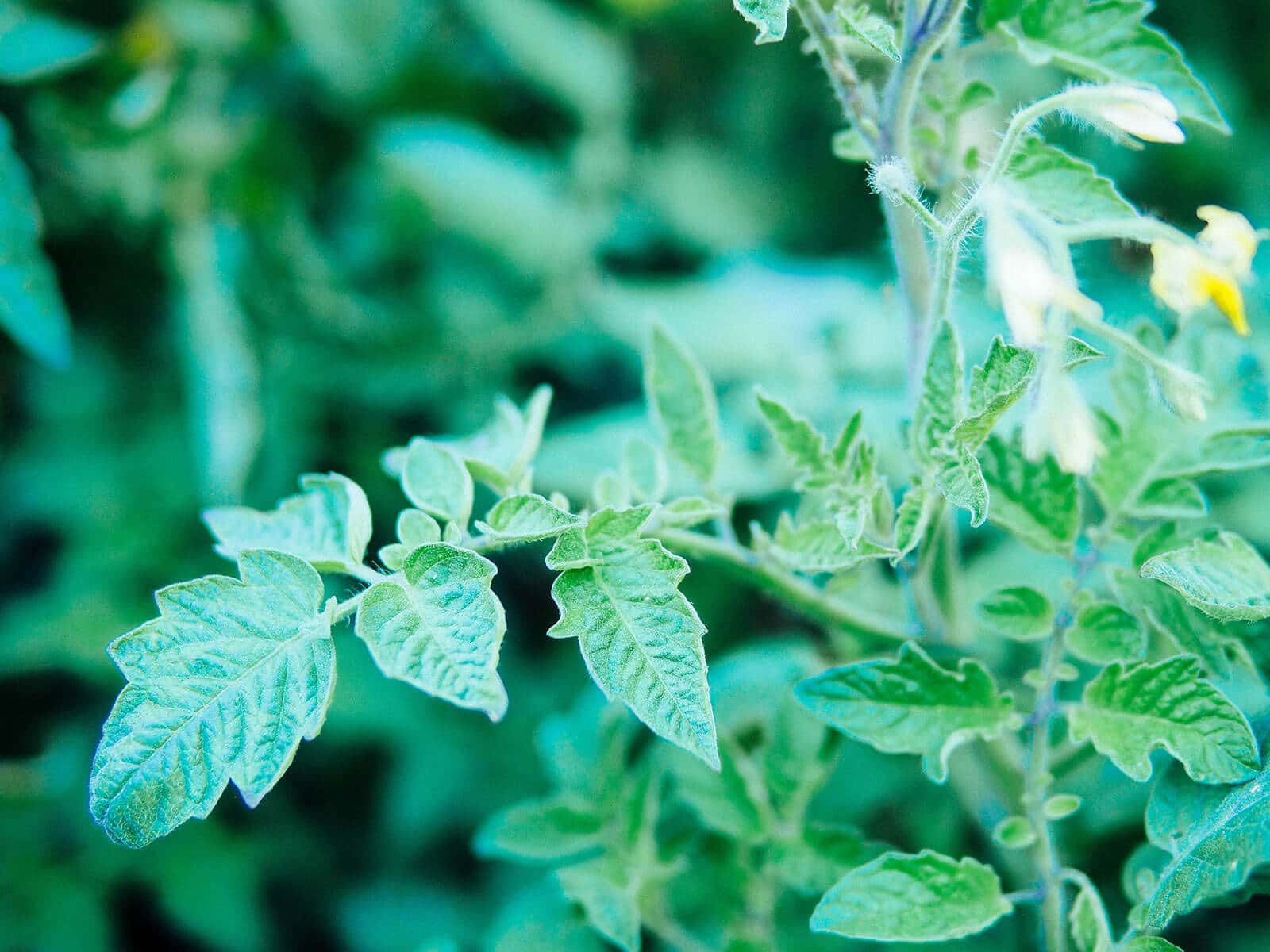
So, can you eat tomato leaves?
Contrary to popular opinion, yes—tomato leaves are flavorful, fragrant, and 100 percent edible. You can cook the fresh, young leaves like most other sturdy garden greens, such as kale, collards, or cabbage (leafy greens that need a little longer cooking time to become tender).
But personally, I like to use tomato leaves as an accent, where their strong herbal aroma adds a unique depth of flavor that you can’t get from tomato fruits themselves.
More tomato growing posts to explore:
- Grow Tomatoes Like a Boss With These 10 Easy Tips
- How to Grow Tomatoes in Pots—Even Without a Garden
- How to Best Fertilize Tomatoes for the Ultimate Bumper Crop
- How to Repot Tomato Seedlings for Bigger and Better Plants
- Why and How to Transplant Tomatoes (a Second Time)
- Planting Tomatoes Sideways: How Growing in a Trench Results In Bigger Healthier Plants
- Florida Weave: A Better Way to Trellis Tomatoes
- Conquer Blossom End Rot and Save the Harvest
- Can You Eat Tomato Leaves? The Answer Will Surprise You
- Why Tomato Leaves Have That Unique Smell
- The Power of Fermenting and Saving Tomato Seeds
- 4 Fastest Ways to Ripen Tomatoes in the Garden and Beat the First Frost
- The 30 Best Tasting Heirloom Tomato Varieties (By Color!)
- 83 Fast-Growing Short-Season Tomato Varieties for Cold Climates
- The Best Time to Pick Tomatoes for Peak Quality (It’s Not What You Think!)
This post updated from an article that originally appeared on August 20, 2013.


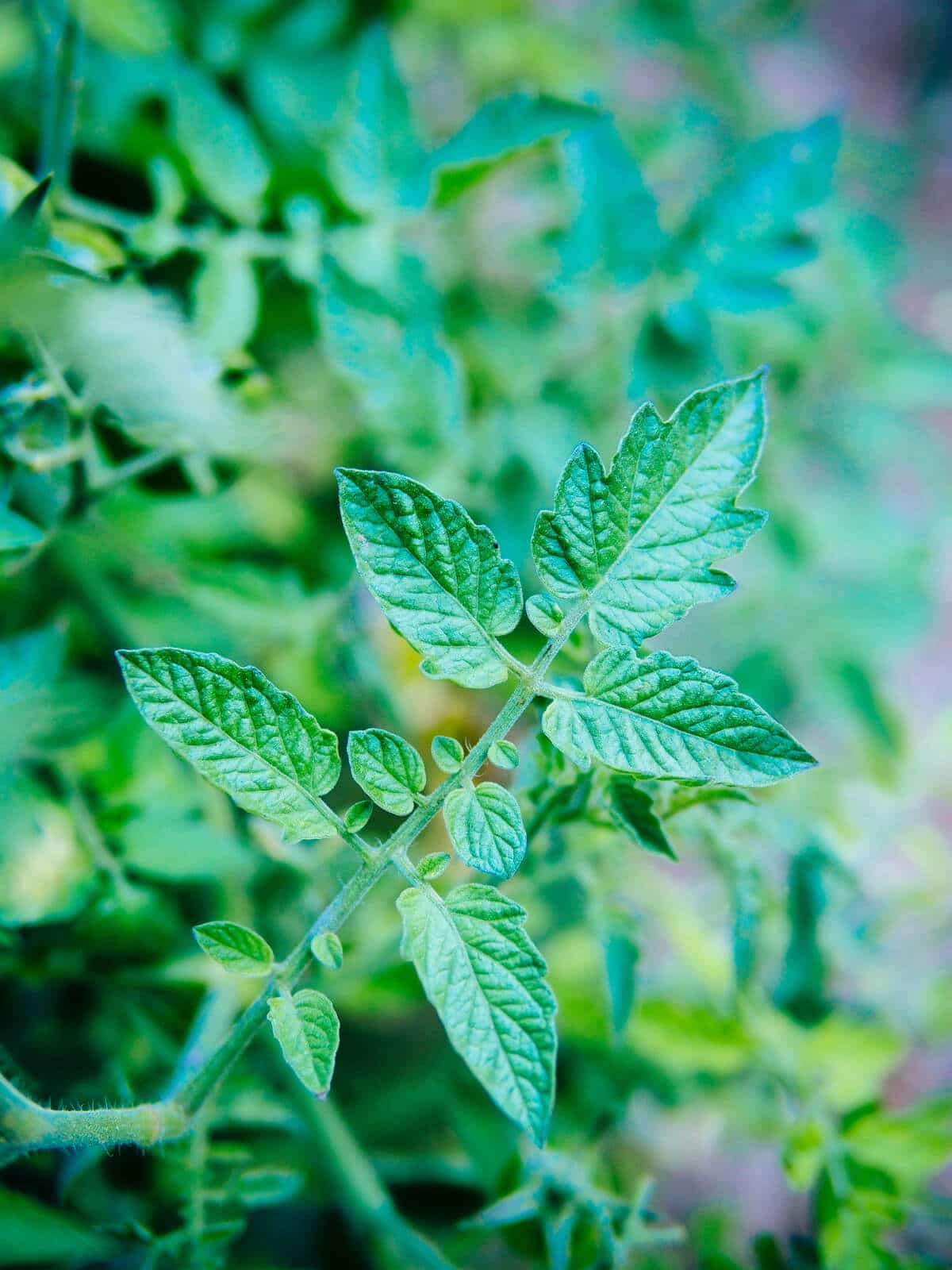













In regards to your last paragraph, Radish Greens are used in Fish Head soup…prepared for me by a friend from Africa many moons ago (it also contained okra and I can’t remember much else) but it was so SOOOO good! (except for the fish head, which he happily ate up, the rest of us he cooked for enjoyed the soup but we were glad we didn’t have that fish head in our bowl looking up at us)
This soup was served with couscous and you ate the soup with your hands by grabbing a chunk of couscous squeezing it together with your fingertips and then dipping it into the soup to sort of ladle some liquid with the veggies and plopping the chunk it into your mouth.
Interesting! I make radish greens soup year-round; they’re an excellent substitute for kale.
As to use as a pest control, olive oil is another substance used to control insects in gardens, (especially on fruit). There is no question as to health benefits of olive oil.
What health benefit? With 16% artery clogging saturated fat? separating oil from plants and then pouring them on our foods is very unnatural and dangerous to our health and is the main root cause for our obesity and chronic diseases.
Actually dale, separating oil from plants is completely natural, and has been practiced by societies around the world for 1000s of years. Extra virgin olive oil is extracted by simply pressing the fruit: a process no more “unnatural” than squeezing an orange.
Among other benefits, antioxidants in olive oil have anti-inflammatory effects, which can actually reduce risk of inflammatory ailments like heart disease. However, processing of olive oil through heat treatment, use of solvents, and dilution with lower quality oils can reduce the benefits, so true extra-virgin oil is considered best.
Additionally, studies have shown that the negative health impacts of saturated fat has been overstated, and that the prevalence of obesity and chronic diseases are more closely linked with the high levels of refined carbohydrates (white flour, high-fructose corn syrup etc), sodium and trans fat found in many packaged or ‘fast’ foods.
A high calorie, low nutrient diet (the most common western diet), combined with a sedentary lifestyle, creates the perfect conditions for long term health problems.
Attributing these problems to natural, healthy, plant oils is very misguided.
No! the fat you eat is the fat you wear. Look around you, go to walmart, hahah. Pouring oils on our foods is causing large people! When these oils enter our blood and then our cells, metabolism is severely restricted, eventually causing diabetes and other chronic illness. I can find no good reason for separating any type of fats from animal or plant and consuming them. Eat a diet rich in carbohydrates, that is what works best hor humans. Whole plant foods, not just the parts!
1. Oil doesn’t enter your blood.
2. Diabetes has nothing to do with a “restricted metabolism.” It has everything to do with the body’s inability to regulate blood sugar levels.
3. A mostly-carb diet is a health disaster.
Hate to break it to you, dale, but various oils have been used for millennia with no ill effects, and many positive ones. To say that consuming fat makes you fat is a drastic oversimplification and indicates a total lack of understanding.
Calories in > calories out = weight gain. Those calories can come from carbs, sugars, fats, or proteins. Pouring oils on our food isn’t causing large people. Our society’s inability to get off of its butt and get some exercise is causing large people.
Your arguments sound like the rabid parroting I would expect of someone that’s read into too many fad diets. The only good diet is a balanced diet of animal and vegetable proteins (or at least SOME good combination of complimentary proteins to provide all of the amino acids necessary), carbs, sugars, and saturated and unsaturated fats, with the appropriate balance of vitamins and minerals. A diet totally lacking in fat is NOT a good diet for a human. Limit your overall caloric intake to what is appropriate for your activity level, and get regular exercise.
Hahahah. Now you’re just funning me! Where on earth do you get these random facts? Looks like I’m just wasting my time here. good luck with you’re “balanced diet” P.S. No diet is totally lacking in fats but pouring oil on your food is making us fat.
I’ll just leave this right here for you, Dale. It’s not the entire body of research on the subject, mind you, but it’s representative of the whole, and a good start on your (obviously lacking) education. It’s up to you to learn more.
http://www.pinnaclife.com/sites/default/files/research/Elxevier_Coronary_disease.pdf
Sorry, but you’re going to have to broaden your horizons a bit if you want to reach the root cause of the obesity epidemic. Pointing a finger at something without doing any actual research on it makes you seem like a politician, not an intelligent being.
Just a note on oils. There are oils that our bodies can use beneficially and there are bad oils. Some oils that start out as good are ruined when they have been hydrogenated. There is so much hydrogenated oils in a lot of food in stores, you really have to look closely at any packaged product you get to avoid it. I work in the plastic industry and I have found that the hydrogenating process of oils is very similar to that of making plastic. Couldn’t you just imagine how bad it would be for you to eat plastic.
that’s why it tastes like plastic too. cool whip vs..real whipped cream for example. just common sense.
I eat a high fat diet, love butter and olive oil and avocados and coconut oil. always been thin even after two children. fat doesn’t make you fat.
Quite literally, insulin in response to high blood *sugar* (glucose) is what makes anyone fat. Fat is much too slowly digested to raise blood sugar and make you fat – see my overview in a comment above. Too much fat can cause other health problems. E.g. burning too many fats and proteins for calories raises acidity of blood, requiring your body to extract calcium from bones to maintain blood pH. Digesting too many fats long term can fatigue organs secreting the necessary juices. This is why the “Atkins diet” is effective for weight loss, but should not be followed long term.
High fat foods are too slow to spike blood sugar on their own, but they can raise the baseline glucose level as they are slowly digested over time. This then makes blood sugar more sensitive to sugary foods. So to *really* get fat, you need to heap your plate with fats *and* carbs. Mmmmm, pass those donuts!
Nothing wrong with separating oil, olive oil is very healthy. Save tge resedue for various things
Very good to know. I think it would be challenging to consume a whole pound of tomato leaves (or any leaves, for that matter) in one sitting unless you were juicing them. Alkaloid poisoning is more common among people who make their own green juices, as they tend to juice the same types of greens every day, and their bodies start to accumulate the same alkaloids en masse. From my research, I’ve found that tomato leaves are no more “toxic” than cabbage or kale, which have their share of alkaloids too.
I have personally seen it kill sheep and goats when the owner unknowingly fed the plants to them.
That doesn’t necessarily mean anything…. chocolate kills dogs. Fine for humans.
+ssssue
Really?
I have raised sheep for more than ten years. Like all other herbivores, sheep and goats avoid eating plants that might hurt them. Besides, who on earth would be stupid enough to feed tomato plants to their animals?
I have sheep and goats, and a fenced paddock next to theirs full of volunteer tomatoes… They ate oodles of the stuff without any ill effect at all. I will do more research on the toxicity, but, I cannot deny the fact that they did eat a lot and were fine.
Appreciate the link; however I was unable to find any further information on what 20-40 micrograms/ml of tomatine actually equals in a real-life scenario. Is that equivalent to eating 5/10/20 pounds of unripe green tomatoes or 5/10/20 pounds of tomato leaves in one sitting? Without comparison, the study doesn’t tell me much and it doesn’t take into account the full, complex organ system of rats… only their heart cells, isolated in a petri dish. I’ve seen similar studies that prove the toxicity of spinach when consumed in vast amounts. ALL leafy greens will reach toxicity at a certain level, but we aren’t doing an IV drip of them.
An article by Rodale Press suggests a pound of leaves may contain toxic levels. I can’t imagine eating a whole pound of tomato leaves. http://www.rodalenews.com/research-feed/tomato-leaves-edible-after-all-these-years
10g of caffeine is fatal for a 200lb human. That’s 50 espressos. And yet, about 200 manage to overdose on caffeine and die every year. “Dose makes the poison” seems to be a hard concept to grasp.
Mostly useless factoid: arsenic is quite toxic in any quantity, but is also a micro (or in this case nano) nutrient required for fertility. Some cases of infertility are caused by an arsenic deficiency.
More practically, many Americans are deficient in vit D, but I know a lady who upped her dose to 12000IU/day, and encountered toxicity. (5000IU daily is the max recommended by even the most radical researchers.)
Iodine is an essential nutrient. Iodine deficiency was identified as the cause of “cretonism” in the early 20th century, and we started iodizing everything from salt to bread to milk to soda pop. Iodine increases IQ, but like vit D, too much is toxic.
In the 1960s, an experimental psychiatric drug containing iodine killed a number of patients from iodine overdose. In a totally irrational but typically public overraction, instead of just pulling the drug, people demanded that the government ban iodine in food (only salt was excepted). Now, most Americans are iodine deficient again.
Anecdotal incident: a friend told me of cognitive problems he was having, and the drugs being prescribed for them (always dangerous). I said, “sounds like a classic case of iodine deficiency”. He still had enough presence of mind to check it out, start eating iodine rich foods, and had the doctor back off the drugs until he doesn’t need them anymore (cold turkey from psyche drugs is dangerous too).
I don’t eat nightshades for other reasons (allergies and they cause inflammatory reaction in me), so I’m dismayed to learned tomatine is used in organic farming. In your research, did you learn if that is absorbed into the plant (fruit/vegetable/leaves) or washed off in preparation?
Tomatine is used as pest control by organic gardeners at home – not necessarily by organic farms. I don’t know what kind of measures a farm would take, as I’m sure it varies. You may want to contact the organic certification boards and find out what they allow for pest control.
So, when you come up w/ a great recipe for Tomato Leaves, Share it w/ us when you survive 🙂
I make tomato sauce with the leaves: http://gardenbetty.com/2013/08/spicy-minty-tomato-sauce-infused-with-tomato-leaves/
Recipes please. This is cool. Thanks for your adventurous
spirit
Here’s one I’ve been making a lot lately, enjoy! http://gardenbetty.com/2013/08/spicy-minty-tomato-sauce-infused-with-tomato-leaves/
Fantastic news, thank you!!
I just found out that sweet potato greens are edible. I assumed, because they are morning glory, that they shouldn’t be eaten. I will be trying them this year. I don’t expect that I will be eating tomato leaves any time soon though. Not everything is wasted- plant waste is not ‘thrown away” it’s turned back into the soil to feed next year’s crop. That is not a waste.
I learned about sweet potato greens recently too. I’m growing them indoors this winter for year-round salad greens.
here in the philippines we ate not only sweet potato leaves we also cook bitter gourd leaves ,squash flower, and many more leaves 😀
Sweet potato leaves are popular in Asian cooking. You can saute them with garlic and soy sauce for a nice side dish.
While living in Seoul I delighted in eating a huge variety of plants as side dishes to most meals. I’m eager to include more in my cooking now back home in Canada. Thanks for the reminder and to not be wasteful with our food.
When visiting other countries, especially Asian countries, I’ve always been surprised to learn what plants (and parts of the plants) they eat. I think cultures that are not as meat-centric as ours simply have more creativity when it comes to their vegetables.
So glad I stumbled upon your site! I love what you wrote, and hopefully will find time to read your other posts, at least this coming winter.
You can add pepper leaves in your list of edible parts that are not usually cooked. It is a common “greens” in Filipinos’ chicken soup we call “tinola.” I have always told my friends and relatives about using it like you would spinach, but I think no one dared to do so.
My dad (Chinese) also makes a soup with pepper leaves! He raves about them all the time; I haven’t tinkered with his recipe yet, but I plan to experiment with my pepper leaves more next summer.
what about the atropine present i havent seen mentioned here?
Some plants in the Solanaceae family do contain very high levels of atropine, such as belladonna (whose scientific name is Atropa belladonna for a reason), datura, and mandrake. These are the hallucinogenic plants.
While tropane alkaloids (of which atropine is a member) are present throughout the Solanaceae family, I haven’t found a study that shows tropane alkaloids in tomato plants pose any danger, nor are they found in any significant amount in tomatoes (the way tomatine is). Fear of atropine seems tied in to Myth #1 above (people confusing tomatoes with deadly nightshades).
very good to know! what about other tropanes such as hyoscamine and scopolomine? appologies if my spelling is off lol. on a side note do you know if datura inoxia seeds need to be cold stratified? looking forward to having a nice moon garden next year 🙂
Both of those alkaloids are found in datura. Hyoscyamine is also known as daturine, not coincidentally. On some level hyoscyamine is also found in the tomato plant, but not in any amount that would actually cause hallucinations the way it can in datura. As stated, the major glycoalkaloid in a tomato is tomatine.
There are endless types of “toxins” found throughout all vegetables (after all, they are there to protect the plant against bacteria, fungi, and animals), but our bodies are able to flush out these toxins before they cause any real harm. This is why we should eat in moderation, no matter how healthful a vegetable is purported to be.
In answer to your last question, I know nothing about datura seeds.
well stated! thank you kindly! any ideas about potato leaves?
Potato leaves do contain very high levels of solanine and chaconine. They won’t kill you if you accidentally ingest a few leaves (the symptoms would probably be similar to food poisoning), but definitely don’t make an entire meal out of potato leaves.
However, SWEET POTATO leaves (which are part of the morning glory family) are completely edible and delicious!
oooo good to know! i just learned that sweet potatoes yesterday as a matter of fact and will certainly have to grow some next season, i imagine they do well in zone 5. another thing people don’t tend to notice is that broccoli, rutabaga and beet and cauliflower leaves are very edible and high in vitamins as far as i know and didnt experience any bad effects from ingesting them. the same goes for the broccoli stalks when prepared well 🙂 thank you again!
You might like this other post that I wrote on broccoli leaves: http://gardenbetty.com/2012/04/broccoli-leaves-are-edible/
And this one on carrot tops: http://gardenbetty.com/2013/07/are-carrot-tops-toxic-the-short-answer-no/
I think many people aren’t aware of these other edible portions of plants because they usually don’t see them in the store. I hope the general mindset of our society shifts in the next generation as home gardens and CSAs proliferate through the cities.
try the sweet potato juices from the boiled sweet potato leaves add some sugar and it taste really good 😀
Wow, opens up a whole new world of inquiry for me! I do want to point out that in the charts they show pickled green tomatoes have a lower tomatine content than fresh, and the tomatine content for small green (unripe) tomatoes is MUCH higher (over 2x as high) than in medium tomatoes. Would like to read more about ways you can use the leaves, the smell of tomato leaves has never given me the urge to consume them – what kind of flavor do they impart?
Flavor-wise it’s hard to pinpoint as they aren’t bitter like kale or sweet like lettuce. They’re sort of in between. I still have more experimenting to do in the kitchen, but I feel the strong scent of the leaves (which I actually love) should have some kind of a role in my recipes… I may try them in a tomato-based soup next.
No wonder my rabbits haven’t keeled over, even after mowing down large swatches of my tomato patch. THANK you for this article!
https://www.ncbi.nlm.nih.gov/pubmed/7423541
Great article!!!! These are the types of arguments that I use all of the time concerning foods and gardening. My favorite term, but not the most accurate I feel, is ‘cultural brainwashing.’ Culture has brainwashed people into doing and believing so that it becomes habit. So much so that to challenge those beliefs/actions is incredibly disruptive and generates backlash, even though they don’t really know why they are doing/believing whatever it is. I’m half Japanese, and you should see the responses when people see the heads still on the fish when we cook them. As you are well aware, they can’t see it, because they’ve been raised to believe that one is supposed to cut the heads off. What a waste.
LOL love your mention of fish heads. I grew up eating in Asian restaurants and eating the entire fish (along with spitting out bones as needed), so imagine my surprise one day when I was 14, ordering in a nice American restaurant with my friends, and they served me a salmon filet… small, perfectly cut, no bones, no skin… and I wondered where the rest of it went?!
These days, my non-Asian friends have all learned to appreciate those tasty fish cheeks! Still no takers on the eyeballs, though. 😉
And if you’re a fan of radish pods, try pickling them! It’s my favorite way to eat them: http://gardenbetty.com/2013/04/radish-seed-pods-and-some-pickles/
No skin?! What a waste. I LOVE grilled salmon skin. That’s where all of the flavor is hiding. I didn’t have enough radish pods to pickle, maybe next season. But I did fill TWO one-gallon jars with four different types of cucumbers mixed with vinegar. SO good. My favorite is to layer the cukes on a pulled pork sandwhich; FYI, I AM in NC, the BBQ south.
I’m always amazed at how many people have never even seen a whole fish ready to be cooked. They would leave if they saw a traditional Asian dinner being prepared, which is too bad because of the wasted nutrion in American preparation. I saw on a survival show in which a guy on a life raft survived by eating all of the organs. At first, he only ate the meat, but started suffering vitamin deficiencies. In a delirium, he started eating everything, heart, lungs, brain, eyes – all raw – and literally ate his way back to health.
About the radish pods again, I have to wonder if eating the pods is similar to eating sprouts in terms of nutritional volume.
In Indonesia in 2001, I watched my Chinese-Indonesian friend break open the skull of a cooked
dove and suck its brain out. He was polite and offered it to me first, but my stomach was still uneasy after trying the slimy chicken feet and the baked chicken blood pudding. Being a white man with an Asian soul, I’m not afraid to try new things, but I do have my limits. Why are chicken feet so hard when uncooked, but so soft and slimy when cooked?
Chicken foot bones have a lot of gelatin in them. When cooked down, they become a gooey gelatinous mess. Personally, I don’t really enjoy eating them (too much work for too little meat) but chicken feet do make an amazing broth.
Thanks for the tips regarding the organic pesticide. Just add it to my garden book for next season.
You’re great by the way!
Thank you!
They’re edible. And here’s the science to back that up. Tomato Leaves: The Toxic Myth http://t.co/UuJh7PxLXh < TY for RT! @yardbutler
Angie Smith liked this on Facebook.
Popular culture has taught us wrong all these years. Tomato Leaves: The Toxic Myth http://t.co/8OsxpcUgAa #gardenchat #gardening
awesome article!
RT @theGardenBetty: They’re edible. And here’s the science to back that up. Tomato Leaves: The Toxic Myth http://t.co/UuJh7PxLXh #gardencha…
They’re edible. And here’s the science to back that up. Tomato Leaves: The Toxic Myth http://t.co/UuJh7PxLXh #gardenchat #gardening
I very much appreciate your inquisitive approach to “well known truths”. So much in the gardening books is just repeated without anybody testing the validity of the statement!
Georgette Howington liked this on Facebook.
I really appreciate your evidence based approach for this article! Those studies aren’t always easy to read, but you translated them well. Thanks!
You’re welcome! It’s something I’ve always been meaning to research, especially now that my tomato plants are at their peak!
Fascinating. I’m interested in the sauce recipe.
I save all carrot and radish tops for the stock pot. I freeze them until I make big pots of stock in the winter. Works great.
I wonder if adding tomato leaves to a stock pot would impart a tomato-y flavor to the stock… hmm.
Tomato leaves are used in the process of making Estratto
I might have to try estratto sometime! Currently I make a tomato sauce with the leaves, and I’ve recently used them in a basil pesto.
Just tasted one. Not bad. I’m going to try some on my burger tonight. I think mixed in a salad would be good.
I put some in an omelet the other day. I think the leaves would be really good in a tomato-based soup too… trying that next.
You really couldn’t taste them on the burger. The ketchup, mustard, mayo, pickles and tomato hid the flavour. Good burger!
Duke Chase Mosakowski liked this on Facebook.
Kitchen Garden Maui liked this on Facebook.
How would you cook and eat tomato leaves? AND I didn’t know you could eat cucumber leaves! How do you cook and eat those?
I’ll be posting a tomato sauce recipe this week that uses tomato leaves. As for cucumber leaves, I don’t cook them (only because I don’t want to strip my vines of all the leaves) but I do put them in salads and wraps. If you thin out cucumber seedlings, you can eat those microgreens too.
Joy Lindholm liked this on Facebook.
In case I missed it, did you eat any?
Yes. I’ve cooked with tomato leaves (adding them to omelets and such) but am experimenting with other recipes where I can bring out their flavor more. (Since now, all I taste are the garlic, onions etc that I cook them with.) I’ll post recipes as I try them and like them. 🙂
Dawn Singh liked this on Facebook.
Deborah Fedorchak Liberatore liked this on Facebook.
Diana Heffernan-Schrader liked this on Facebook.
Evette Garcia liked this on Facebook.
RT @BG_garden: Tomato Leaves: The Toxic Myth:
Maybe it was my Asian upbringing that taught me never to waste food, as my fam… http://t.c…
Tomato Leaves: The Toxic Myth:
Maybe it was my Asian upbringing that taught me never to waste food, as my fam… http://t.co/RIaF7vY1XR